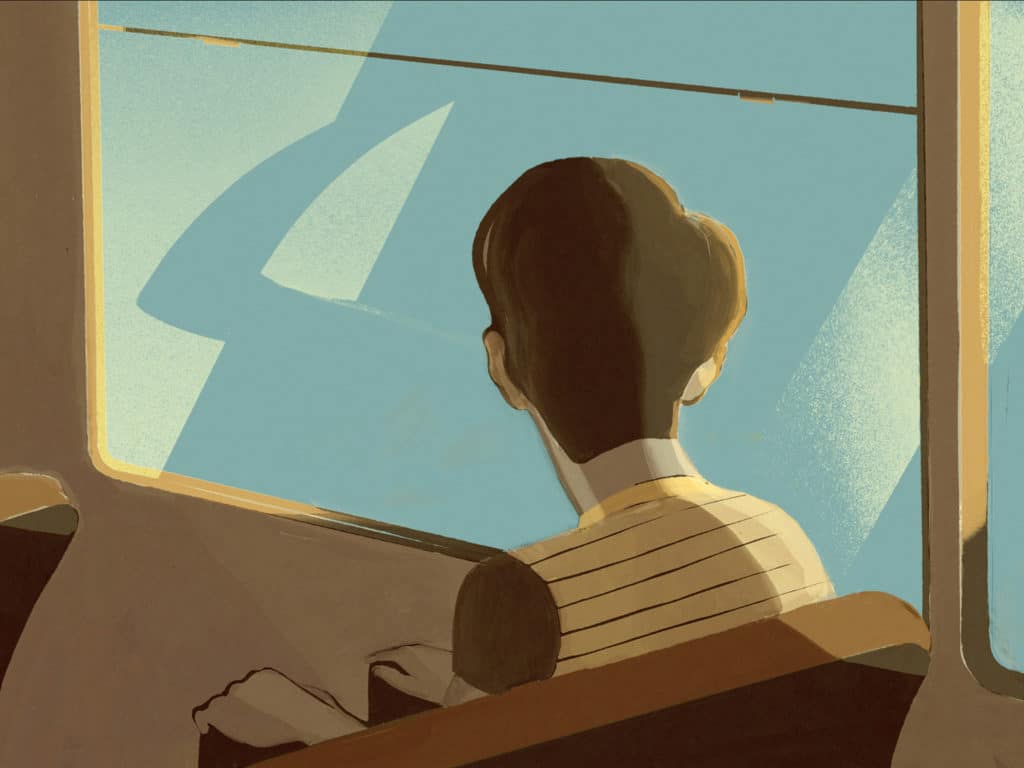
At 13, my world revolved around my bus pass, bike and life jacket. I had some great sailing options, but I lived 10 miles away. After school and on weekends, often I would take the bus to the yacht club for Laser sailing on Lake Washington.
I earned my life jacket as payment for a summer job teaching younger kids how to sail. My mom bought me my diving wetsuit. I made my own weight jacket out of old sweatshirts—they were still legal back then, remember— and I found old bits of discarded rope on the dock and used them as my control lines. Going sailing was logistically challenging, but in my mind the rewards were always worth time spent on the bus and the trying sail through the narrow Montlake Cut.
At the time, the Seattle Laser Fleet was on top of the world. Stars like Chris Maas, Dennis Clark, Craig Thomas and Carl Buchan would battle it out in the often fluky and weed-infested waters of Union Bay, honing their skills in preparation for the coming world championship and U.S. Youth Championships. As an aspiring racer, these guys—there were a few women too—were role models.
I watched how they launched their boats, how they tweaked their control lines, how they maintained their positions on the starting line, how they used their weight to help them turn around the marks.
I also observed that they shared with each other what they were learning.
This was the very beginning of the “Laser Revolution,” and dinghy sailing techniques were evolving quickly. I did not know it at the time, but the center of the movement was right there in front of me.
I was just a kid who liked to sail, but there was a group of slightly older sailors who were the real deal.
RELATED: Youth Sailing
The bus did not run as often on Sundays, so I had to ride my bike—life jacket and wetsuit strapped to the back. This built character—and also my legs and lungs.
My battle was only half over when I got to the yacht club and rigged up my battered club boat. Sometimes I got a tow from a passing motorboat, but most of the time I still had to sail from the small bay where the yacht club is, through a narrow canal to Lake Washington.
More character building, and I also learned how to rock effectively to self-propel when the wind died, which was almost every time.
In those days, one of the Laser fleet members would volunteer to run races for the day, and each boat would pay $1. Each week I had to save up 60 cents each way for bus fare, plus a dollar for the racing, for $2.20 total. Lunch was a soggy sandwich brought from home.
All this was of no consequence because I got to sail against real sailors, current and future champions who were much better than me.
But I could also see myself in them. I could see that it was possible to get to a world-class level, despite my youth and modest skills at the time. I just had to keep coming back every week, keep watching and learning, keep getting stronger.
After a couple of years, the club bought a new batch of Lasers. This was a big break for me because I was just getting good enough that a decent Laser actually made a difference.
In 1976, I won the Canadian Nationals in Vancouver at age 16 in a club boat. While the Seattle fleet’s rock stars had largely moved on to Finns and other classes, I beat some pretty good guys from California, the Northwest and Canada. I was kind of stunned at the time, but I realized that those days of riding my bike or taking the bus were paying off.
My surprise victory qualified me for the Laser Worlds in Brazil—an amazing experience, my first time away from North America, and my first look at the international sailing scene. In Brazil, I met Peter Commette and John Bertrand, whom I had seen in the sailing magazines.
Alas, I was not quite ready for the big time. I was too small, not fit enough, and generally not good enough to compete at this level, and I finished 49th of 100. Not terrible for a 17-year-old kid from Seattle, but I vowed next time I would be more competitive.
These days, I sometimes wonder what caused me to choose sailing at a young age, and to pursue it above anything else. I had the desire, but equally important was the environment that allowed me to progress at my own pace—but with a high standard clearly in view.
How can we create this nurturing but competitive pathway for kids today? Is it better that kids sail only against other kids, or would it be more productive, as it was for me, to race against adults?









